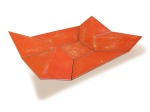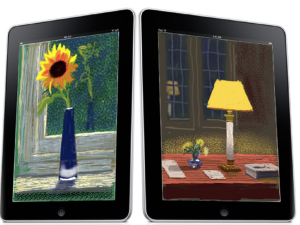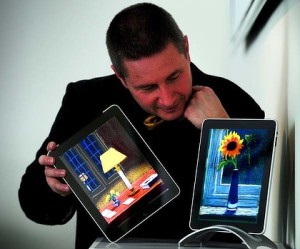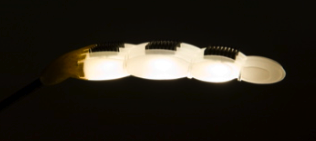This book by Ann Marie Shillito has been published in October 2013 by Bloomsbury. The first heading of the introduction reads, ‘Don’t be intimidated!’ and serves as Shillito’s motivational motto for the interested maker who is on the verge to engage with digital technologies. ‘I want this book to empower, knowing that engagement with and access to digital technologies will continue to improve and that as designer makers we have exceptional knowledge and expertise to take full advantage of all the means available to enhance our practice.’
A practicing designer/maker with a background as a jeweller, Shillito is also the founder of Anarkik3D developer of the 3D modelling product Cloud9. This software enables the user to employ haptic feedback – with a force feedback device – to model virtual 3D objects using also their sense of touch. (I was priveledged to tested an early prototype of this system – it had also stereo-scopic vision co-located with the users real gestural positions).
I like the fact that this complex and multifaceted theme is introduced by an experienced maker. In writing this book, Shillito has also included the voices and works of 45 international contributors who have included digital technologies together with their practice to various degrees.
Being image rich, this book makes it easy to see the diverse opportunities digital technologies have to offer for craft and design practitioners. It takes an honest look as to what would be requried from a maker to access these opportunities. The investment in acquiring the necessary skills is significant. A chapter each is given to 2D and 3D technologies and there distinct applications. Chapter 6 ‘Accessing digital technologies’ might be of particular interest to the novice digital/maker.
Chapter 2, ‘A craft-minded approach’, touches on important questions for contemporary making that sees traditional disciplines becoming less defined through the very technologies that hold so much potential for them. This chapter sets the context against which this book draws its value. It canvases the value of the skills and approaches unique to the designer/maker that both inform the output the creative works as well as the development/application of these digitally-based processes.
I have been familiar with all the technologies introduced in Digital Crafts and have used a fair part of them directly. While all aspects are illustrated with completed works by competent digital Designer/makers, I would have been interested to see how some of these works progressed from conception to realisation.
Digital Craft is certainly a worthwhile resource for anyone interested in the contemporary Designer/Maker model as well as the current state of digital manufacturing and the processes required to access them.
















